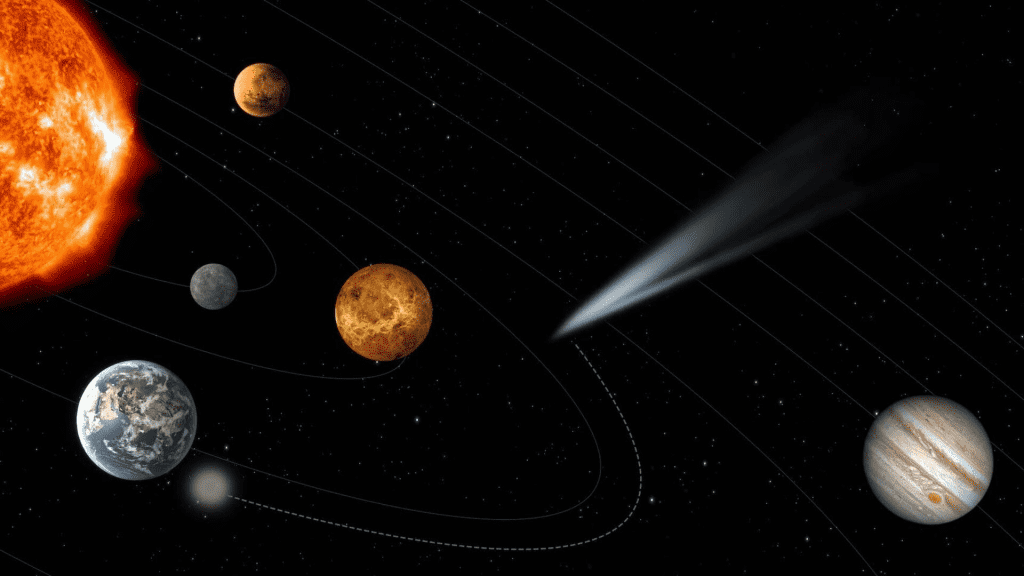The European Space Agency (ESA) has announced a new mission named Comet Interceptor, which will launch without a specific target in mind, instead waiting for a visitor from the Solar System’s outer reaches or possibly another star.
“It will be the first probe to be parked in space, ready to fly to a target at short notice. “\We are taking a significant risk,” says Günther Hasinger, ESA’s director of science. “But it’s a high reward.”
Comet Interceptor will be the first space mission to visit a comet from the confines of the solar system or even outside the solar system, with the unique characteristic of remaining on standby in the solar system before melting towards this comet, ESA explained in a press release. It also said that such a comet might only be discovered in a few years and potentially after Comet Interceptor leaves Earth.
This exploration mission, suggested by the European scientific community, will be launched in 2029 and developed in partnership with the Japanese space agency (JAXA), various state-space agencies, and European research centres.
The mission will comprise a main spacecraft and two smaller probes, one of which will be developed by JAXA. Comet Interceptor will be launched along with Ariel, a new telescope designed to explore the atmospheres of exoplanets. Both will fly to the second Lagrange point (L2), a gravitational stability position 1.5 million kilometres from Earth.
The entire thing will last only a few hours. Still, the scientific benefits will be truly remarkable and provide insight into the material that existed at the birth of the Solar System 4.5 billion years ago.

“It’s a message in a bottle from the formation period,” says Michael Kueppers at ESA in Madrid, Comet Interceptor’s project scientist.
Given the mission’s approval last week, ESA will now select a prime contractor to create the primary spacecraft from one of two competing designs submitted by Thales Alenia Space in the UK and OHB Italia in Italy.

Three space probes will make up Comet Interceptor. Each space probe will be outfitted with scientific sensors that will offer supplementary information about the comet’s nucleus and its gas, dust, and plasma environment, allowing scientists to better comprehend the nature of a primitive comet interacting with the wind environment. In addition, they will produce the first 3D profile of an Oort cloud comet containing material that has lasted since the Sun and planets formed.
Comet Interceptor is a descendant of the ESA’s groundbreaking cometary missions Giotto and Rosetta. It is unique, however, as it will provide the first simultaneous observations – from three different points – of an object located outside the terrestrial environment, and because it will target a comet visiting the inner solar system for the first time – most likely originating from the vast Oort cloud surrounding the solar system’s outer edges.

“Comet Interceptor is going to give us a first real glimpse of a primordial body,” says Alan Fitzsimmons, a comet researcher at Queen’s University Belfast, UK.
“We have no idea what it will look like. That will truly be new, never-seen-before science.”


